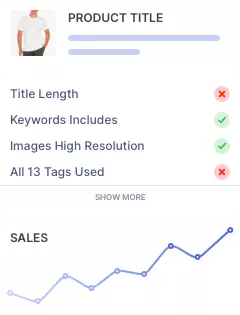10 Essential SEO Strategies for Jewelry Websites
Here are 10 SEO for jewelry strategies for success and growth on your jewelry e-commerce site. Implementing these best practices will help you create a website that meets all search engines and customer needs. We will also highlight how Roketfy works and how it can help as a bonus.

The online retail space is more competitive than ever. With thousands of jewelers vying for customers’ attention, you must employ smarter strategies to drive traffic to your site and boost conversions.
SEO for jewelers e-commerce sites is vital if you want your jewelry e-commerce business to shine like the gemstones you sell. You may access new audiences and boost your jewelry site’s sales by optimizing your content and SEO for jewelry websites to rank higher in search engine results.
Streamline the Site Architecture
Site architecture describes how a website’s pages are arranged and connected.
- Better crawlability: Organizing your jewelry e-commerce site logically and hierarchically provides clear pathways for search engine bots to discover and index your product pages.
- Improved indexing of product pages: Creating a clear hierarchy of categories and subcategories makes it easier for search engines to identify the relevance and structure of your content.
- Effective keyword targeting: Organizing your site based on different product categories and subcategories creates targeted landing pages that align with user search intent. This facilitates keyword optimization, allowing you to optimize page titles, headings, URLs, and content to improve your search engine rankings for relevant keywords.
- Enhanced user experience (UX): A user-friendly experience leads to longer session durations, increased engagement, and higher conversion rates.
Improve the Product Pages
Consider these suggestions to improve your product pages:
- Conduct keyword research: Use keyword research tools to find high-volume, low-competition keywords that align with your jewelry products and target audience’s search intent.
- Optimize page titles: To assist search engines in categorizing the content better, optimize page titles by incorporating your target keyword. Ensure the title is succinct, descriptive, and appealing to get clicks.
- A better URL structure would be: Make sure your product page URLs are precise, evocative, and loaded with pertinent keywords.
- Improve your URL structure: Always ensure that your product page URLs are descriptive, clear, and have relevant keywords. Utilize hyphens to divide words and avoid using unnecessary numerals, letters, or characters.
- Use schema markup to implement structured data: Give search engines structured information about your products and services using schema markup, such as Product Markup. This can enhance search results with rich snippets and improve visibility.
Create Interesting and Powerful Product Descriptions
For each product, provide exciting and distinctive descriptions. Emphasize important qualities, advantages, and differentiators. Incorporate relevant keywords naturally while maintaining readability. Avoid duplicate content.
Include high-resolution, visually appealing images of your jewelry. Optimize photo file titles and alt tags with precise, descriptive key phrases to boost visibility in visual search results. Include relevant details such as product specifications, dimensions, materials, care instructions, and customer reviews.
Include Relevant Metadata
Metadata refers to information that describes your web pages, such as page titles, descriptions, and image alt text. Here’s why including relevant metadata is crucial:
- Enhanced search visibility: This is achieved by using optimized metadata, such as meta titles and descriptions, which aid search engines in understanding the content of your pages and raise their visibility in search results.
- Increased click-through rates (CTR): A compelling meta title and well-crafted description that align with user search intent significantly improve click-through rates, driving more targeted traffic to your e-commerce site.
- Better UX: Relevant metadata sets clear expectations for users and contributes to a positive user experience, higher satisfaction, and engagement. This results in profitable repeat visits.
- Optimized social sharing: By including relevant metadata, such as Open Graph tags, you can ensure that your shared content displays compelling titles, descriptions, and images. This improves your shared content’s visual appeal and clickability, increasing its reach and potential for engagement.
- Enables easier site navigation: Using structured data markup and meta tags in metadata adds more details about your jewelry products. This information creates rich snippets in search results, displaying details like price, availability, and ratings.
Generate Blog Content
Regularly publishing blog posts related to jewelry improves search engine rankings by establishing your site as an authoritative resource, which contributes to higher visibility. It also increases organic traffic by targeting a wider range of relevant keywords, providing backlink opportunities, and attracting visitors searching for related topics. Roketfy’s AI writing tools can help you generate SEO-optimized content pertinent to your blog.
Diversifying content beyond product pages allows for a broader audience reach and attracts visitors interested in related information. Covering jewelry-related topics, like fashion trends, styling tips, and customer success stories, keeps your site fresh, engaging, and relevant to a wider audience.
Build Powerful Internal Links
Internal links are the connecting factor that links different pages within your website to form a cohesive experience. Linking to related content on your site enables search engines to discover all your pages, thus strengthening the relevance of each page. It also improves the SEO for jewelry websites. Make sure to link between the product pages, category pages, brand pages, and blog entries on your e-commerce website.
For instance, on a product page for a gemstone ring, you may link to:
- The gemstone category page
- Other rings with the exact gemstone
- The ring style or cut page
- A blog post on how to care for gemstone jewelry
Link using anchor text that is relevant and specific for users. Rather than “click here,” use “ruby rings” or “round-cut diamond rings.” Connect to your most significant pages and categories to improve results since internal links transfer authority from one page to another.
As you build out your content, look for opportunities to create internal links between new and existing pages. Your website will be more robust and unified the more links you have between it. But don’t overdo it; aim for 1 to 3 internal links per page to avoid seeming spammy. Keep your internal linking structure logical and user-friendly.
Increase Your Page Speed
You can achieve faster page speeds by implementing the following techniques:
- Optimize photo sizes: Reduce file sizes without sacrificing quality by compressing and resizing photos. To automate this procedure, use plugins or image-compressing programs.
- Minify and combine files: By deleting extra characters and whitespace, minify CSS, JavaScript, and HTML files.
- Cache headers must be set for browser caching to work: Saving static resources locally enables returning users to load your website more quickly.
- Activate GZIP compression: To minimize your file’s sizes before moving them to a browser, activate GZIP compression on your server. As a result, data transmission is sped up by reducing file sizes.
- Minimize redirects: Reduce the number of redirects on your website, as each redirect adds extra time to the page load. Use sparingly only when necessary.
- Use a content delivery network (CDN): Utilize a CDN to share your website content over several servers worldwide. As a result, loading times for users in various regions are sped up, and server response times are decreased.
- Reduce external scripts: Minimize the number of external scripts and third-party integrations on your website, as they can introduce delays.
- Regularly monitor and test: Test your page speed frequently using programs like Google PageSpeed Insights, GTmetrix, or WebPageTest. Conduct regular tests and implement optimizations based on the results.
Focus on Mobile-Friendly Design
Over $415 billion in m-commerce sales were made in the US in 2022. You can lose out on many prospective clients if your website isn’t mobile-optimized. Here are some helpful tips to developing mobile-optimized SEO for jewelry websites:
- Design that adapts: Use a responsive strategy to adjust your website to multiple screen widths dynamically.
- Simplified navigation: Use collapsible menus and intuitive navigation options for easy mobile browsing.
- Touch-friendly elements: Optimize interactive elements for touch input, ensuring they are easy to tap and swipe.
- Readable typography: Select readable fonts and sizes for your typography to read on smaller displays.
- Optimized media: Media that has been optimized will be smaller and faster to load on mobile devices.
Promote Your Content on Social Media
To increase traffic and brand awareness for your jewelry e-commerce site, promote your content on social media platforms like Instagram and Pinterest. Share links, use eye-catching visuals, run contests, and offer prizes like a store credit or free shipping to encourage shares and gain followers likely to convert to customers.
Create genuine connections with followers by liking, commenting, and sharing their posts to promote your work. Also, always pay close attention to social media analytics to decipher what resonates with your target audience. Then do more of what’s working. You can accomplish this by using tools like Roketfy AI Writer.
Run an SEO Audit Regularly
To keep SEO optimized, conduct an audit at least once a quarter. It helps:
- Identify and address technical issues.
- Optimize on-page elements.
- Analyze backlinks
- Assess overall site performance.
Conduct regular audits using tools like listing checker to ensure your SEO for jewelry websites meets current SEO standards, improves search engine rankings, enhances user experience, and stays ahead of algorithm updates. It allows you to make informed decisions and implement necessary optimizations to drive organic traffic and achieve long-term SEO for jewelry success.
Bottom Line
The success of your business relies on how you formulate your SEO strategies for jewelry e-commerce sites. When you do it right, you attract the target audience, build brand awareness, boost visibility, and more.
And here is the kicker:
At Roketfy, you can find numerous tools for all your SEO for jewelers content needs to rank your Etsy business higher. It’s easy to get started; simply sign in, and you will be on your way to success.
📌 You may be interested in this content: 13 Common Mistakes to Avoid in Your Market SEO Strategy






